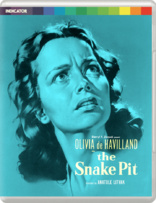The Snake Pit Blu-ray Movie
HomeThe Snake Pit Blu-ray Movie 
Indicator Series | Limited EditionPowerhouse Films | 1948 | 108 min | Rated BBFC: 12 | Apr 22, 2019
Movie rating
7.3 | / 10 |
Blu-ray rating
| Users | 0.0 | |
| Reviewer | 4.0 | |
| Overall | 4.0 |
Overview
The Snake Pit (1948)
Virginia Cunningham finds herself in a state insane asylum...and can't remember how she got there. In flashback, her husband Robert relates their courtship, marriage, and her developing symptoms. The asylum staff are not demonized, but fear, ignorance and regimentation keep Virginia in a state of misery, as pipesmoking Dr. Mark Kik struggles through wheels within wheels to find the root of her problem. Then a relapse plunges Virginia back into the harrowing 'Snake Pit'.
Starring: Olivia de Havilland, Mark Stevens, Leo Genn, Celeste Holm, Glenn LanganDirector: Anatole Litvak
| Film-Noir | Uncertain |
| Psychological thriller | Uncertain |
| Drama | Uncertain |
| Mystery | Uncertain |
Specifications
Video
Video codec: MPEG-4 AVC
Video resolution: 1080p
Aspect ratio: 1.37:1
Original aspect ratio: 1.37:1
Audio
English: LPCM Mono (48kHz, 24-bit)
Subtitles
English SDH
Discs
Blu-ray Disc
Single disc (1 BD)
Playback
Region B (locked)
Review
Rating summary
| Movie | 4.0 | |
| Video | 5.0 | |
| Audio | 5.0 | |
| Extras | 3.5 | |
| Overall | 4.0 |
The Snake Pit Blu-ray Movie Review
Reviewed by Dr. Svet Atanasov May 6, 2019Anatole Litvak's "The Snake Pit" (1948) arrives on Blu-ray courtesy of Indicator/Powerhouse Films. The supplemental features on the disc include an original trailer for the film; audio commentary with author and film historian Aubrey Solomon; new video interview with film critic Neil Sinyard; and more. The release also arrives with a 36-page illustrated booklet featuring new essay by Lindsay Hallam, an overview of contemporary critical responses, and technical credits. In English, with optional English SDH subtitles for the main feature. Region-B "locked".
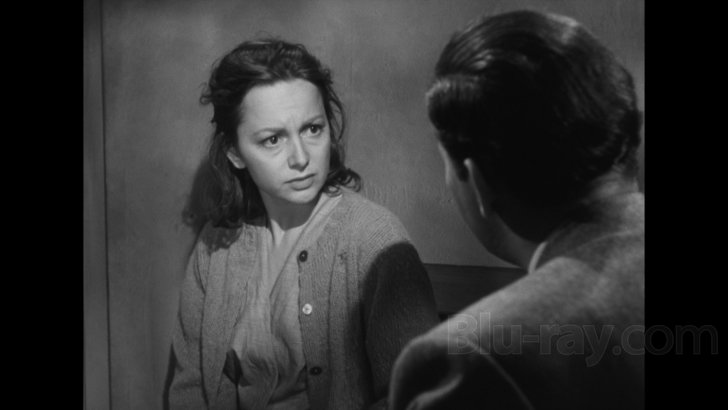
The patient
It is pretty easy to identify the many obvious issues that make an old psychiatric institution like the one Anatole Litvakís film visits a cruel Ďsnake pití. So, letís point out a few.
The atmosphere in the institution is so tense and depressing that it seems unlikely that its patients are actually healing. There is too much negative energy floating around and the few patients that are fully aware of the passage of time appear stuck in a perpetual struggle to neutralize it. The psychiatrists and their staff appear stuck in another very odd repetitive cycle. Some of the senior psychiatrists are good actors and regularly fool their colleagues that their efforts are beneficial to the patients, but when they gather to discuss their progress it instantly becomes clear that they are all guessing their treatment options. It is why time and time again they only react to symptoms that their patients struggle to detail. The relationships between the psychiatrists, their staff and the patients are part of yet another odd cycle. Here trust seems to be a major factor but because it is often attached to 'educated' guesses it complicates the relationships, and by default the healing process as well. You can immediately recognize the issues, can't you? I did, too.
Then I viewed this film a second time because the more I thought about the obvious issues that it highlights, the less comfortable I became with their 'obvious' solutions. For example, if psychiatric patients are not to be isolated, what is the alternative? How can patients that are not fully aware of their existence be safer in a world full of strangers? What if they are still isolated but not allowed contact with other patients? Wouldnít they become psychiatric prisoners that are doomed to self-destruct even faster? I then considered the medical advancements that have been made since the filmís release, and I could not convince myself that contemporary psychiatrists have in fact abandoned the guessing games that are chronicled in the film. Take a few moments and ponder what has changed. Yes, their protocols have changed, but there are countless examples where 'humane' institutions have endorsed therapies that heal one condition and, in the process, create many more. And what about the evolution of the personal relationships between psychiatrists and their patients? Are ethics standards better now? Is our compassion genuine now? I am not at all convinced they are. In fact, if a visionary Hollywood director picked up one of the many true horror stories that emerged from VA clinics across the country in just the last decade and made a similar film of it, I am certain that this imaginary film would be even more difficult to stomach than Litvak's.
The parts of Litvakís film that I found most disturbing were the ones where Olivia De Havillandís character is seen struggling to reconstruct the different phases of her mental collapse with Leo Gennís doctor. What the young woman is going through is the ultimate nightmare -- she does her best to recover and arrange bits of her life in the proper order while her mind refuses to cooperate and, in the process, bombards her with feelings and sensations that are pushing her right back into the abyss of madness. And, there is no one around her that could do something meaningful that can alleviate the suffocating pressure. She is alone, a terrified prisoner of her own mind.
The age of the film shows the most whenever the patients are engaged in mass activities. There are humorous exchanges and dances for instance that add a heavy dose of old-fashioned melodrama which is out of sync with the type of realism that the rest of the film promotes. On top of this, a lot of supporting actors are also clearly operating with the wrong type of enthusiasm.
The film is based on the novel by Mary Jane Ward, a former patient of numerous psychiatric institutions who chronicled her experiences there. Litvak acquired the rights to the novel but had a very difficult time convincing Hollywood producers that the film he wanted to make of it was worth the risk. Eventually, after plenty of difficult negotiations, Darryl F. Zanuck struck a deal with him. The film then earned multiple Oscar nominations, but went on to win only a statuette for Best Sound/Recording.
The Snake Pit Blu-ray Movie, Video Quality 
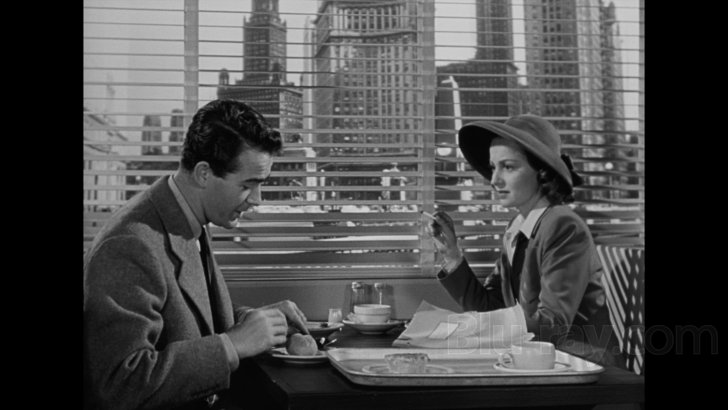
Presented in its original aspect ratio of 1.37:1, encoded with MPEG-4 AVC and granted a 1080p transfer, Anatole Litvak's The Snake Pit arrives on Blu-ray courtesy of Indicator/Powerhouse Films.
The release is sourced from a recent 4K remaster that was prepared by Twentieth Century Fox in the United States. The remaster is solid, and I think that the film looks gorgeous in high-definition. Indeed, aside from a few very minor -- and I mean very minor -- density fluctuations that make small segments of the film look a tad softer, everything else looks as healthy and stable as it should after a proper 4K makeover. The grading in particular is very convincing and as a result there are some rather impressive nuances that emerge during daylight and indoor/darker footage. If you have a larger screen or project, you will be pleased to hear that fluidity is great and the visuals have that natural filmic quality that they ought to have as well. Finally, there are no traces of age-related imperfections, such as warping, fading, debris, or cuts. (Note: This is a Region-B "locked" Blu-ray release. Therefore, you must have a native Region-B or Region-Free player in order to access its content).
The Snake Pit Blu-ray Movie, Audio Quality 
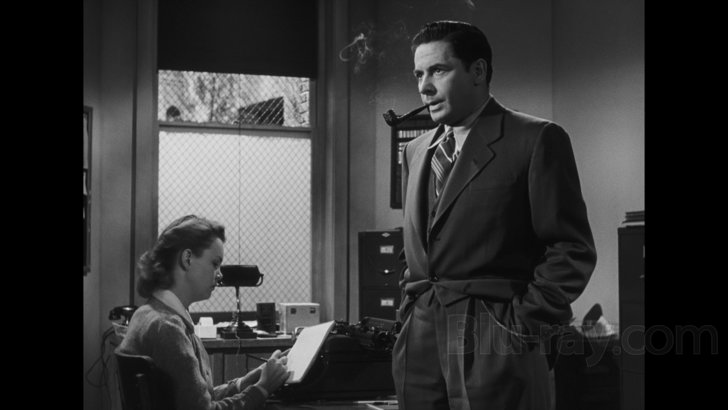
There is only one standard audio track on this Blu-ray release: English LPCM 1.0. Optional English SDH subtitles are provided for the main feature.
The audio is clear, clean, and properly balanced. It has a good dynamic amplitude as well, though as always you should keep in mind that these types of older films come with plenty of native limitations. The important thing to underscore here is this: the audio has been fully restored and there are no anomalies that will affect negatively your viewing experience.
The Snake Pit Blu-ray Movie, Special Features and Extras 
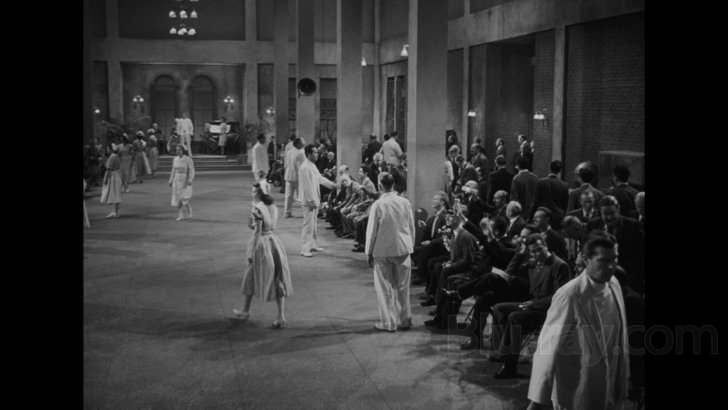
- Trailer - an original trailer for The Snake Pit. In English, not subtitled. (3 min).
- Image Gallery - a collection of original production and promotional materials for the film.
- The Battles of Olivia de Havilland - in this new program, film historian Pamela Hutchinson discloses the evolution of Olivia de Havilland's career. In English, not subtitled. (10 min).
- Under Analysis - in this new program, film critic Neil Sinyard discusses the conception of Anatole Litvak's The Snake Pit, its subject matter, and Olivia de Havilland's performance. In English, not subtitled. (31 min).
- Commentary - in this audio commentary, author and film historian Aubrey Solomon discusses Mary Jane Ward's novel that inspired The Snake Pit, Anatole Litvak's acquisition of the novel's rights and the production deal he struck with Darryl F. Zanuck, the ambience and visual style of the film as well as the footage from the mental hospital, some of its main themes, Olivia de Havilland's career before the film, etc.
- Booklet - a limited edition exclusive booklet with a new essay by Lindsay Hallam, an overview of contemporary critical responses, and film credits.
The Snake Pit Blu-ray Movie, Overall Score and Recommendation 
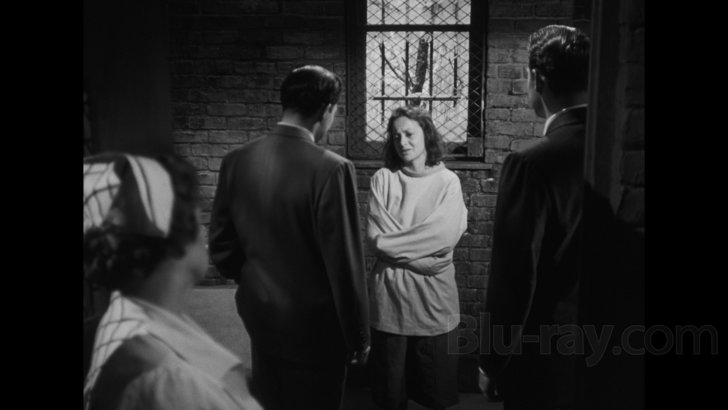
My initial take on the issues that The Snake Pit highlights was a predictable one -- they belong in the past and therefore the film's concerns are no longer relevant. However, the more I thought about them, the more I started linking them to the many incredible horror stories about war veterans with various mental and other issues that have emerged from VA hospitals in recent years. A second viewing of the film then made me ponder if we have really made some irreversible progress, or if there are just more ways now to hide and excuse the inexcusable. So, I had a very unusual experience with The Snake Pit. This new release from Indicator/Powerhouse Films is sourced from a recent 4K restoration of the film that was completed by Twentieth Century Fox in the United States, and is Region-B "locked". HIGHLY RECOMMENDED.
Similar titles
Similar titles you might also like

The Dark Mirror
1946

Equus
Limited Edition
1977

Nightmare Alley
1947

Dead Reckoning
Indicator Series | Standard Edition
1947

Phantom Lady
Arrow Academy
1944

The Lost Weekend
Masters of Cinema
1945

The Strange One
End as a Man | Indicator Series | Limited Edition
1957

Klute
1971

Murder, My Sweet
Premium Collection
1944

The Wrong Man
Premium Collection
1956

The Three Faces of Eve
1957

Detour
1945

A Woman's Vengeance
Indicator Series
1948

Brick
2005

Secret Beyond the Door
1947

Force of Evil
Arrow Academy
1948

Whirlpool
1950

Between Midnight and Dawn
Indicator Series
1950

The Reckless Moment
Indicator Series
1949

The Naked City
Arrow Academy
1948
